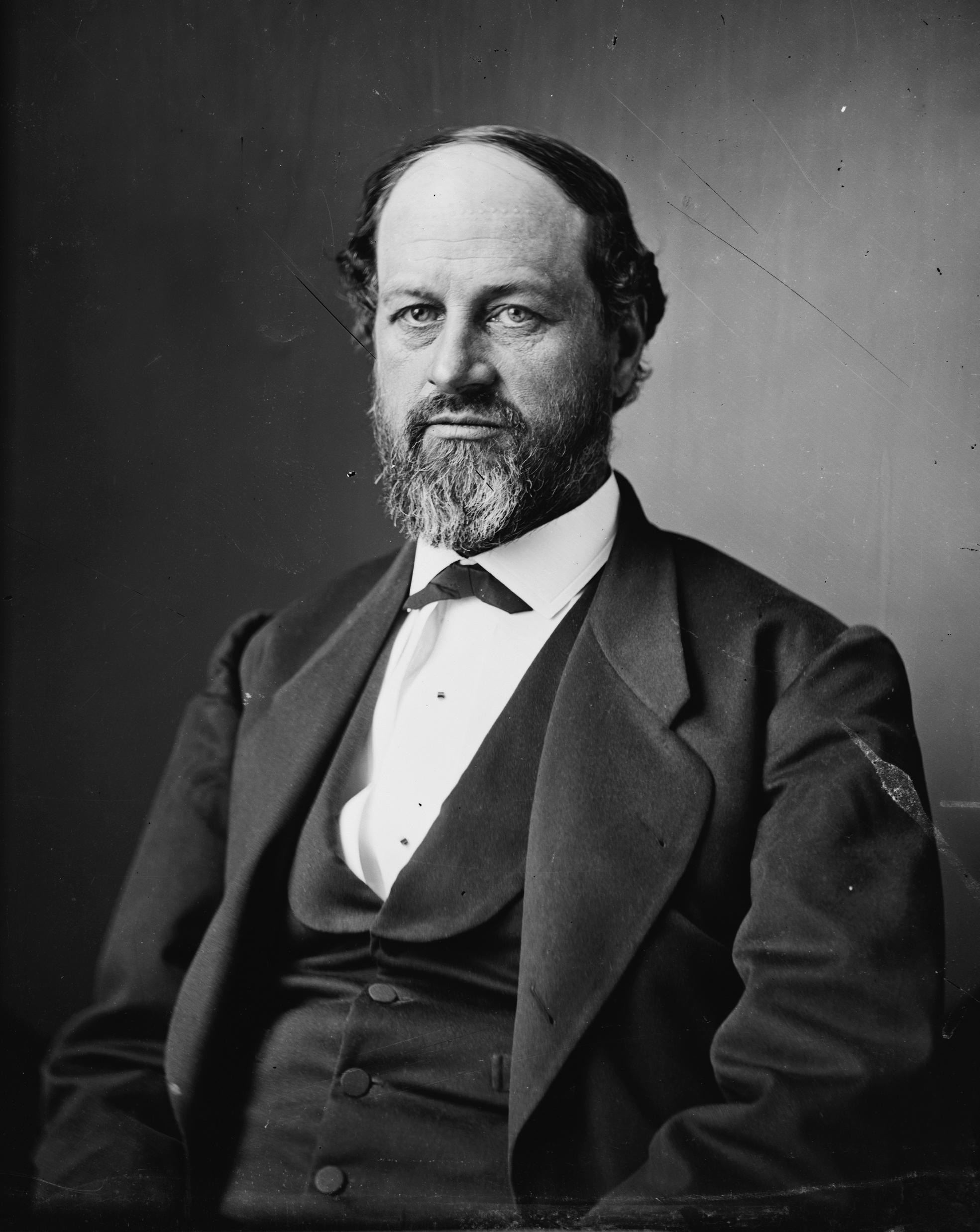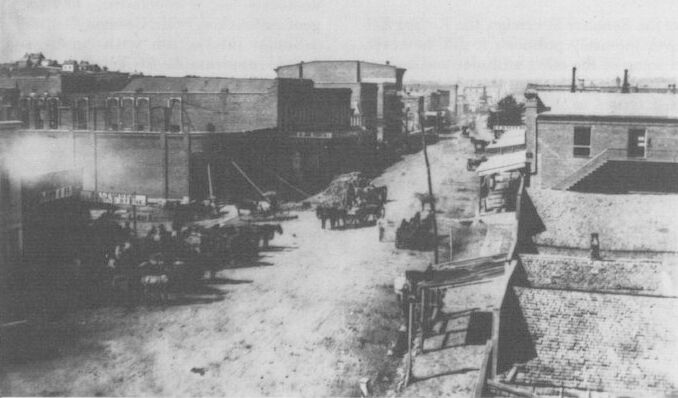|
Willis J. Bailey
Willis Joshua Bailey (October 12, 1854 – May 19, 1932) was an American politician and Republican United States House of Representatives, United States Representative from Kansas and the List of Governors of Kansas, 16th Governor of Kansas. Born in Carroll County, Illinois, Bailey attended the common schools, Mount Carroll High School, and the University of Illinois. He married Ida B. Weede on June 9, 1903, and had two stepchildren. Bailey moved to Nemaha County, Kansas, in 1879, and became a successful farmer, rancher, and banker. He and his father founded the town of Baileyville, Kansas in 1880. He served as member of the Kansas House of Representatives from 1888 to 1890. He was president of the Republican State League in 1893. He served as member of the Kansas State Board of Agriculture from 1895 to 1899. Bailey was elected as a Republican Party (United States), Republican to the 56th United States Congress, Fifty-sixth Congress (March 4, 1899 – March 3, 1901). He was not ... [...More Info...] [...Related Items...] OR: [Wikipedia] [Google] [Baidu] |
Federal Reserve Bank Of Kansas City
The Federal Reserve Bank of Kansas City is located in Kansas City, Missouri and covers the 10th District of the Federal Reserve, which includes Colorado, Kansas, Nebraska, Oklahoma, Wyoming, and portions of western Missouri and northern New Mexico. It is second only to the Federal Reserve Bank of San Francisco in size of geographic area served. Missouri is the only state with two main Federal Reserve Banks; the other is located in St. Louis. Federal Reserve Notes issued by the bank are identified by "J" on the face of one and two dollar bills and the J10 on the face of other currency. The current president is Esther George. Headquarters buildings The first bank building was the R.A. Long Building at 928 Grand which opened on November 16, 1914 until a new $4.3 million building could be built across the street at 925 Grand which formally opened in November 1921 in Downtown Kansas City. Shortly after it was established, the bank rented space to outside tenants. President Harry S ... [...More Info...] [...Related Items...] OR: [Wikipedia] [Google] [Baidu] |
Common School
A common school was a public school in the United States during the 19th century. Horace Mann (1796–1859) was a strong advocate for public education and the common school. In 1837, the state of Massachusetts appointed Mann as the first secretary of the State Board of Education where he began a revival of common school education, the effects of which extended throughout America during the 19th century. Early development Common schools originated in New England as community-funded instruments of education for all children of the region or neighborhood. These secondary schools furthered the Puritan conformity of the region by institutionalizing religion into the curriculum for the purpose of instilling good morals and obedience in the populace. The 17th-century Puritan relied upon Christian organizations, such as the Anglican Society for the Propagation of the Gospel in Foreign Parts, for catechisms as the first grammar books. In most cases, local church clergy took responsibility for ... [...More Info...] [...Related Items...] OR: [Wikipedia] [Google] [Baidu] |
American Bankers
American(s) may refer to: * American, something of, from, or related to the United States of America, commonly known as the "United States" or "America" ** Americans, citizens and nationals of the United States of America ** American ancestry, people who self-identify their ancestry as "American" ** American English, the set of varieties of the English language native to the United States ** Native Americans in the United States, indigenous peoples of the United States * American, something of, from, or related to the Americas, also known as "America" ** Indigenous peoples of the Americas * American (word), for analysis and history of the meanings in various contexts Organizations * American Airlines, U.S.-based airline headquartered in Fort Worth, Texas * American Athletic Conference, an American college athletic conference * American Recordings (record label), a record label previously known as Def American * American University, in Washington, D.C. Sports teams Soccer * B ... [...More Info...] [...Related Items...] OR: [Wikipedia] [Google] [Baidu] |
1932 Deaths
Year 193 ( CXCIII) was a common year starting on Monday (link will display the full calendar) of the Julian calendar. At the time, it was known as the Year of the Consulship of Sosius and Ericius (or, less frequently, year 946 ''Ab urbe condita''). The denomination 193 for this year has been used since the early medieval period, when the Anno Domini calendar era became the prevalent method in Europe for naming years. Events By place Roman Empire * January 1 – Year of the Five Emperors: The Roman Senate chooses Publius Helvius Pertinax, against his will, to succeed the late Commodus as Emperor. Pertinax is forced to reorganize the handling of finances, which were wrecked under Commodus, to reestablish discipline in the Roman army, and to suspend the food programs established by Trajan, provoking the ire of the Praetorian Guard. * March 28 – Pertinax is assassinated by members of the Praetorian Guard, who storm the imperial palace. The Empire is auctioned off ... [...More Info...] [...Related Items...] OR: [Wikipedia] [Google] [Baidu] |
1854 Births
Events January–March * January 4 – The McDonald Islands are discovered by Captain William McDonald aboard the ''Samarang''. * January 6 – The fictional detective Sherlock Holmes is perhaps born. * January 9 – The Teutonia Männerchor in Pittsburgh, U.S.A. is founded to promote German culture. * January 20 – The North Carolina General Assembly in the United States charters the Atlantic and North Carolina Railroad, to run from Goldsboro through New Bern, to the newly created seaport of Morehead City, near Beaufort. * January 21 – The iron clipper runs aground off the east coast of Ireland, on her maiden voyage out of Liverpool, bound for Australia, with the loss of at least 300 out of 650 on board. * February 11 – Major streets are lit by coal gas for the first time by the San Francisco Gas Company; 86 such lamps are turned on this evening in San Francisco, California. * February 13 – Mexican troops force William Wa ... [...More Info...] [...Related Items...] OR: [Wikipedia] [Google] [Baidu] |
1902 Kansas Gubernatorial Election
The 1902 Kansas gubernatorial election was held on November 4, 1902. Republican nominee Willis J. Bailey defeated Democratic nominee W. H. Craddock with 55.45% of the vote. General election Candidates Major party candidates *Willis J. Bailey, Republican *W. H. Craddock, Democratic Other candidates *F. W. Emerson, Prohibition *A. S. McAllister, Socialist *James H. Lathrop, People's Results References {{1902 United States elections, state=collapsed 1902 Kansas Gubernatorial A governor is an administrative leader and head of a polity or political region, ranking under the head of state and in some cases, such as governors-general, as the head of state's official representative. Depending on the type of political ... 1902 elections in the United States November 1902 events ... [...More Info...] [...Related Items...] OR: [Wikipedia] [Google] [Baidu] |
Kansas's At-large Congressional District
Kansas's at-large congressional district for the United States House of Representatives in the state of Kansas is a defunct congressional district. It existed from statehood January 29, 1861 to March 4, 1907. List of members representing the district References * * Congressional Biographical Directory of the United States 1774–present {{coord missing, Kansas At-large United States congressional districts Former congressional districts of the United States At-large At large (''before a noun'': at-large) is a description for members of a governing body who are elected or appointed to represent a whole membership or population (notably a city, county, state, province, nation, club or association), rather than ... 1861 establishments in Kansas ... [...More Info...] [...Related Items...] OR: [Wikipedia] [Google] [Baidu] |
Kansas City, Missouri
Kansas City (abbreviated KC or KCMO) is the largest city in Missouri by population and area. As of the 2020 census, the city had a population of 508,090 in 2020, making it the 36th most-populous city in the United States. It is the central city of the Kansas City metropolitan area, which straddles the Missouri–Kansas state line and has a population of 2,392,035. Most of the city lies within Jackson County, with portions spilling into Clay, Cass, and Platte counties. Kansas City was founded in the 1830s as a port on the Missouri River at its confluence with the Kansas River coming in from the west. On June 1, 1850, the town of Kansas was incorporated; shortly after came the establishment of the Kansas Territory. Confusion between the two ensued, and the name Kansas City was assigned to distinguish them soon after. Sitting on Missouri's western boundary with Kansas, with Downtown near the confluence of the Kansas and Missouri Rivers, the city encompasses about , making ... [...More Info...] [...Related Items...] OR: [Wikipedia] [Google] [Baidu] |
Atchison, Kansas
Atchison is a city and county seat of Atchison County, Kansas, United States, along the Missouri River. As of the 2020 census, the population of the city was 10,885. The city is named in honor of US Senator David Rice Atchison from Missouri and was the original eastern terminus of the Atchison, Topeka and Santa Fe Railway. Atchison is also the home of Benedictine College. History Founding Atchison was founded in 1854 and named in honor of Missouri senator David Rice Atchison, who, when Kansas was opened for settlement, interested some of his friends in the scheme of forming a city in the new territory. Senator Atchison was interested in ensuring that the population of the new Kansas Territory would be majority pro-slavery, as he had been a prominent promoter of both slavery and the idea of popular sovereignty over the issue in the new lands. However, not everyone agreed upon the location he had selected, and on July 20, 1854, Dr. John H. Stringfellow, Ira Norris, Leonidas ... [...More Info...] [...Related Items...] OR: [Wikipedia] [Google] [Baidu] |
57th United States Congress
The 57th United States Congress was a meeting of the legislative branch of the United States federal government, composed of the United States Senate and the United States House of Representatives. It met in Washington, DC from March 4, 1901, to March 4, 1903, during the final six months of U.S. President William McKinley's presidency, and the first year and a half of the first administration of his successor, U.S. President Theodore Roosevelt. The apportionment of seats in the House of Representatives was based on the Eleventh Census of the United States in 1890. Both chambers had a Republican majority. Major events * September 6, 1901: Leon Czolgosz shot President William McKinley at the Pan-American Exposition in Buffalo, New York * September 14, 1901: President William McKinley died. Vice President Theodore Roosevelt became President of the United States * October 16, 1901: President Roosevelt invited African American leader Booker T. Washington to the White House. The ... [...More Info...] [...Related Items...] OR: [Wikipedia] [Google] [Baidu] |
56th United States Congress
The 56th United States Congress was a meeting of the legislative branch of the United States federal government, composed of the United States Senate and the United States House of Representatives. It met in Washington, D.C. from March 4, 1899, to March 4, 1901, during the third and fourth years of William McKinley's presidency. The apportionment of seats in this House of Representatives was based on the Eleventh Census of the United States in 1890. Both chambers had a Republican majority. There was one African-American member, George Henry White of North Carolina, who served his second and final term as a Representative in this Congress, and would be the last black member of Congress until 1928, and the last black member of Congress from the South until 1972. Major events * June 2, 1899: The Filipino Rebellion began the Philippine–American War. * November 21, 1899: Vice President Garret Hobart died. * January 8, 1900: President McKinley placed Alaska under military rule. ... [...More Info...] [...Related Items...] OR: [Wikipedia] [Google] [Baidu] |




